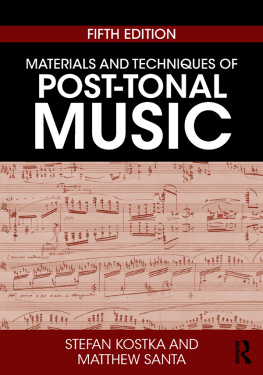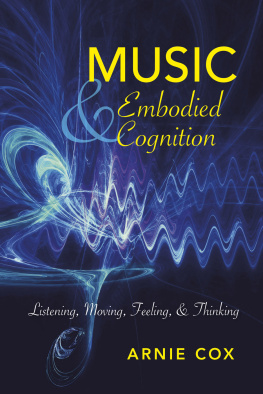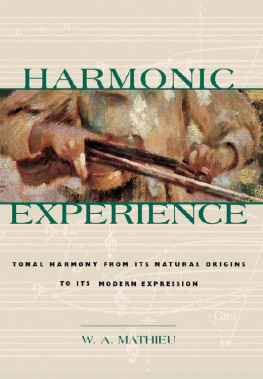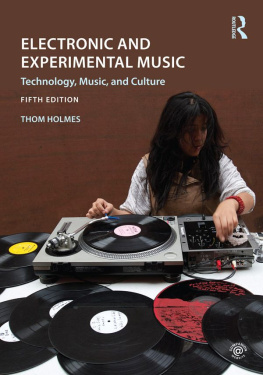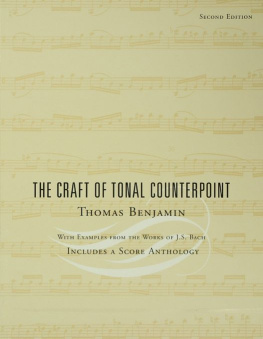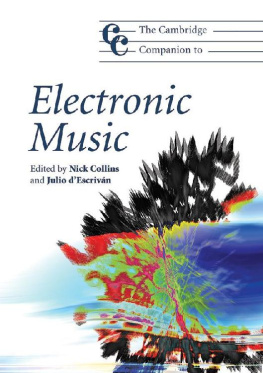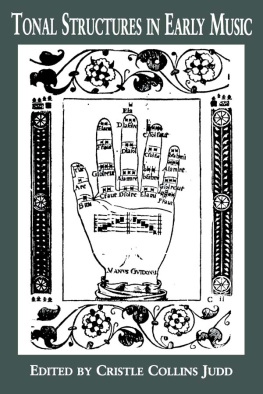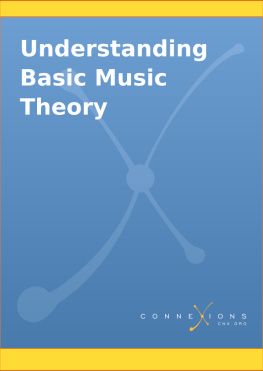Materials and Techniques of Post-Tonal Music
Materials and Techniques of Post-Tonal Music, Fifth Edition provides the most comprehensive introduction to post-tonal music and its analysis available. Covering music from the end of the nineteenth century through the beginning of the twenty-first, it offers students a clear guide to understanding the diverse and innovative compositional strategies that emerged in the post-tonal era, from Impressionism to computer music.
This updated fifth edition features:
chapters revised throughout to include new examples from recent music and insights from the latest scholarship;
the introduction of several new concepts and topics, including parsimonius voice-leading, scalar transformations, the New Complexity, and set theory in less chromatic contexts;
expanded discussions of spectralism and electronic music;
timelines in each chapter, grounding the music discussed in its chronological context;
a companion website that provides students with links to recordings of musical examples discussed in the text and provides instructors with an instructors manual that covers all of the exercises in each chapter.
Offering accessible explanations of complex concepts, Materials and Techniques of Post-Tonal Music, Fifth Edition is an essential text for all students of post-tonal music theory.
Stefan Kostka is Professor Emeritus of Music Theory at the Butler School of Music at The University of Texas at Austin.
Matthew Santa is Professor of Theory and Chair of the Music Theory and Composition Area at the Texas Tech University School of Music.
Materials and Techniques of Post-Tonal Music
FIFTH EDITION
Stefan Kostka
The University of Texas at Austin
Matthew Santa
Texas Tech University

Fifth edition published 2018
by Routledge
711 Third Avenue, New York, NY 10017
and by Routledge
2 Park Square, Milton Park, Abingdon, Oxon, OX14 4RN
Routledge is an imprint of the Taylor & Francis Group, an informa business
2018 Taylor & Francis
The right of Stefan Kostka and Matthew Santa to be identified as authors of this work has been asserted by them in accordance with sections 77 and 78 of the Copyright, Designs and Patents Act 1988.
All rights reserved. No part of this book may be reprinted or reproduced or utilised in any form or by any electronic, mechanical, or other means, now known or hereafter invented, including photocopying and recording, or in any information storage or retrieval system, without permission in writing from the publishers.
Trademark notice: Product or corporate names may be trademarks or registered trademarks, and are used only for identification and explanation without intent to infringe.
First edition published by Prentice Hall 1989
Fourth edition published by Prentice Hall 2011
Library of Congress Cataloging-in-Publication Data
Names: Kostka, Stefan M., author. | Santa, Matthew, author.
Title: Materials and techniques of post-tonal music / Stefan Kostka,
Matthew Santa.
Description: Fifth edition. | New York, NY : Routledge, 2018. |
Includes bibliographical references and index.
Identifiers: LCCN 2017044195 (print) | LCCN 2017046370
(ebook) | ISBN 9781315229485 (ebook) | ISBN 9781138714168
(hardback) | ISBN 9781138714199 (pbk.)
Subjects: LCSH: Composition (Music) | Music19th century
Analysis, appreciation. | Music20th centuryAnalysis,
appreciation.
Classification: LCC MT40 (ebook) | LCC MT40 .K8 2018 (print)
| DDC 781.309/04dc23LC record available at
https://lccn.loc.gov/2017044195
ISBN: 978-1-138-71416-8 (hbk)
ISBN: 978-1-138-71419-9 (pbk)
ISBN: 978-1-315-22948-5 (ebk)
Typeset in Bembo & Helvetica Neue
by Florence Production Limited, Stoodleigh, Devon, UK
Visit the companion website: www.routledge.com/cw/kostka
for our parents
Contents
Instruction in music theory at the college level has long been concerned primarily with the music of the tonal era, spanning roughly some 300 years and including the Baroque, Classical, and Romantic periods. The reasons for this are not hard to imagine. After all, most of the masterworks that are our steady diet as concertgoers and performers were composed during that time, some significant exceptions such as concert-band music notwithstanding. And probably no one who has studied the tonal system in depth has failed to be impressed with what must surely rank as one of the greatest of humanitys artistic achievements.
But musical achievements since 1900 have also been of great significance, and theorists in recent decades have shown interest in devoting more instructional time to the music of that century. One problem, however, has been the lack of appropriate instructional materials. Although several fine books available on music after 1900 are available, few of them deal with the topic in a way that seems appropriate for the general music student, and it is this need that the present text is intended to meet.
Materials and Techniques of Post-Tonal Music is organized primarily by compositional technique and only partly chronologically. Most chapters deal with some aspect of music (rhythm, for instance) throughout the period, but there is a quasi-chronological method in the ordering of the chapters. No attempt is made in the text to teach music history per se or to explore in detail the style of individual composers. Instead, the emphasis is on musical materials and compositional techniques. Each chapter includes an introduction, several subheaded sections, and a summary. The discussions are illustrated by a large number of musical examples drawn from music literature since 1900. With few exceptions, the examples are currently available in audio format, and as many of them as possible should be listened to. The last part of each chapter consists of exercise material that in most cases is divided into four subsections: Fundamentals, Analysis, Composition, and Further Reading. (See the Bibliography for complete bibliographical references for notes and Further Reading assignments.) Most teachers will find that there are more exercises than they can make use of profitably.
Materials and Techniques of Post-Tonal Music is appropriate for a unit as short as several weeks or as long as a year. In the former case, we suggest omitting some of the chapters that are less vital for a short overviewperhaps , for instance) require more time than the average to complete successfully, while others (such as 8 and 15) require less.
To a certain extent, the chapters in this book are freestanding because they do not follow a chronological sequence, but there are exceptions. form the core foundation for many of the chapters to follow, so it would not be advisable to omit any of them.
NEW TO THE FIFTH EDITION
Most of the chapters have been revised to some extent, and a number of new examples have been added. Various new concepts and topics have been introduced: parsimonious voice-leading, scalar transformations, the New Complexity, and set theory in less chromatic contexts. The discussions of spectralism and of electronic music have both been expanded.
The most dramatic change has been the addition of a supporting website (www.rouledge.com/cw/kostka) that includes both links to audio recordings of the musical examples for students and an instructors manual for instructors.

